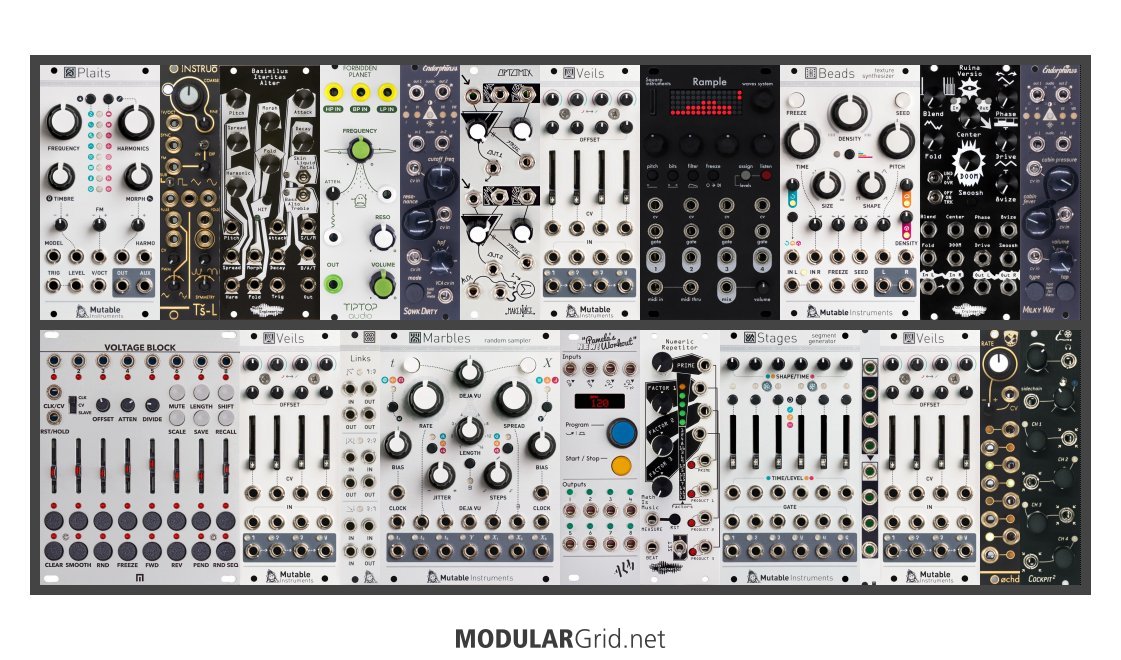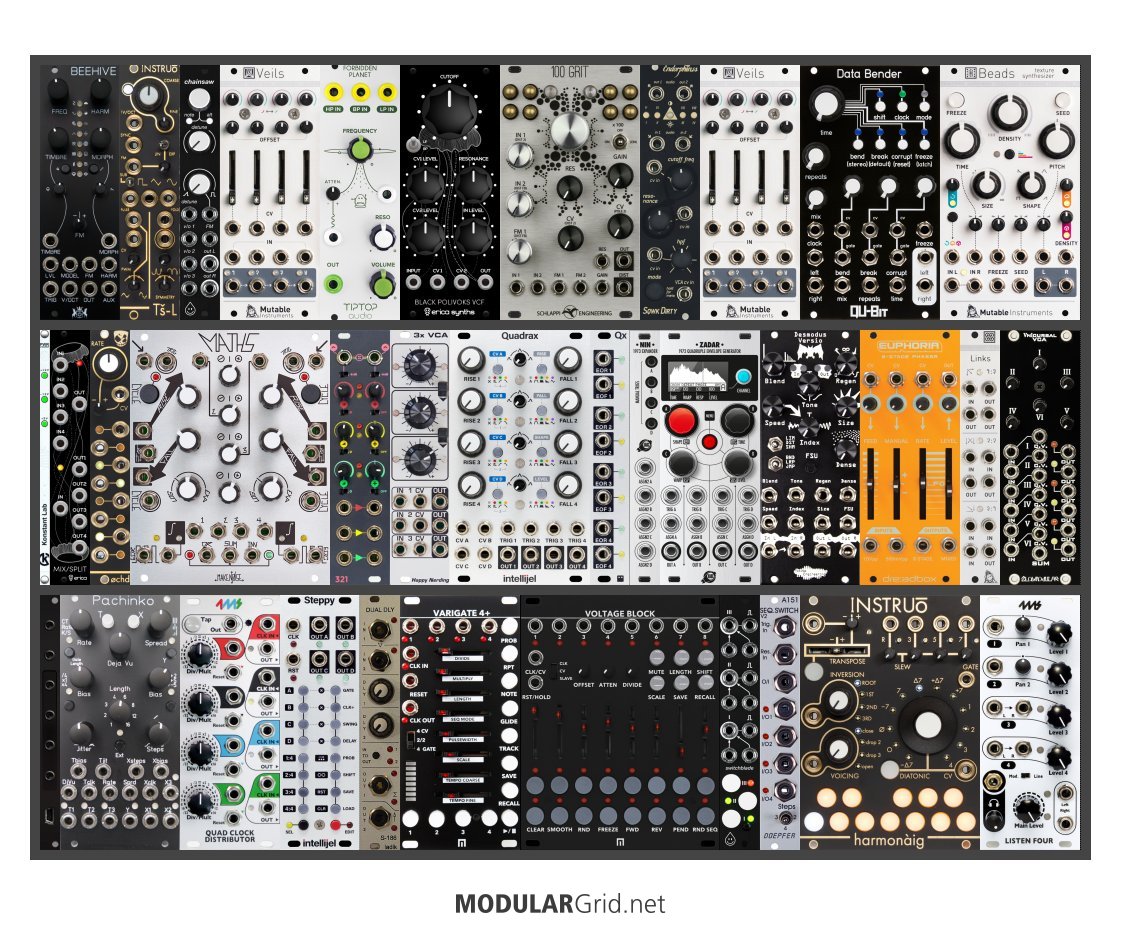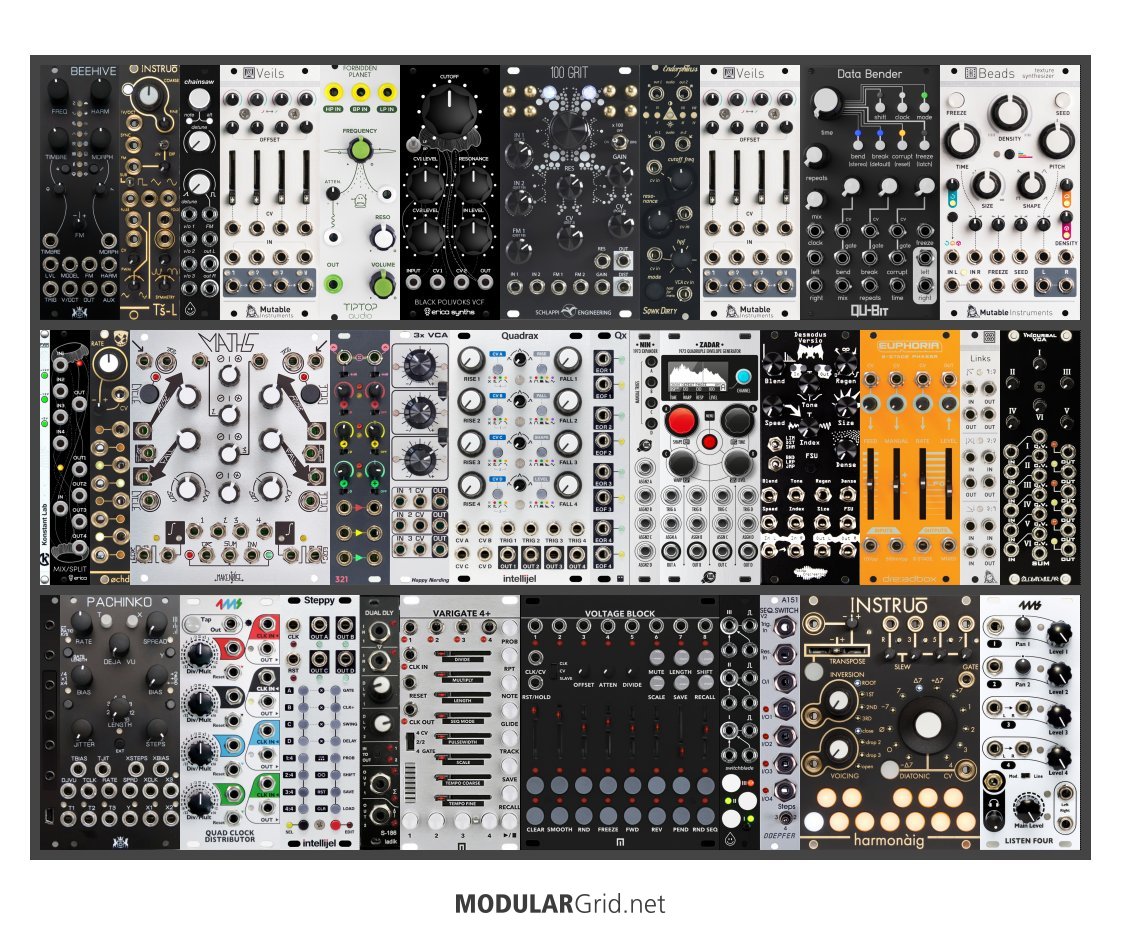I did misstate my goals for the system. The idea was to provide a "standard" instrument arrangement (e.g. bass, drums, lead, arp) in a single system, while still allowing for some wierd-sound exploration. And that's really my goal with modular - sound exploration in a non-DAW environment.
-- jtunes_ia
Ahhh...now, see, that makes much more sense. So, let's tear into this...
First up, having drums IN the cab is probably not the right way to proceed at present, given that you can get all sorts of much more capable standalone drum machines for far less than the modules needed plus the cost of the space they'll take up. You definitely want a machine that you can lock up to the DAW and modular, so that also gives some indications of how to proceed with interfacing on the modular so that everything "plays nice". This doesn't mean you can't send the machine THRU the modular, however; a good stereo input preamp + envelope following = very wild filter-swept percussives in step with the percussion itself. Or lots of other possible implementations. But this then means you'd have a bit of a different mixer complement, because you'll want a mixer that has enough stereo inputs if you're going to do that.
This is pretty much how it works. Define a need, vet whether or not it'll work, then figure out how to implement it. And once you figure THAT out, vet it again...this time with an eye toward conserving space + money. Do you HAVE TO have that set of modules? Can you do it cheaper? More effectively? Would an outboard device be better-suited to the solution? All of these should be in mind while thrashing out a build.
Now, let's see...basic voicing...so, with the bass part, you're going to want two of the same VCO. This is super-important, because you want to be able to detune between them so that the sound gets HUGE. Maybe a bit of waveshaping to get the sound more "in yer face", and then a solid 4-pole LPF...the old Moog ladder topology would be perfect.
The arpeggi/harmonic part is also pretty straightforward up to the point where you start considering how you want timing to work. Do you want just straight-up clocking? Do you want to mess with the clock signals? If so, how? Random drops? Some swing? Boolean logic funtime? This is where VCV comes in, because it's far more difficult to explain this sort of thing and much BETTER to just have at the circuitry to sort out what works for you. However, if you pull up the "clock modulator" category here, you can see there's TONS of possible methods (some making more sense than others!) for altering timing behavior. So pretty much any sort of rhythmic trickery applies here; you can even treat certain sequencers (Euclideans!) as "clock modulators" with internal stochastics.
Now, that lead part...this is actually where you'll want to throw in a LOT of different tweakable parameters in the form of modules in the "voice's" signal chain. So, waveshapers are on the table, distorters, oddball filtering, granularization (a very effective method of "accumulating" yet another multi-"voice" layer, btw), delays, phasers, all that cray shiz...BECAUSE this one voice has to be the most variable and most memorable, as it's out front lots of the time. But by having lots of modules in that signal path that you can bring in and out of the chain and constantly adjust, this will make that one voice jump right out there where it belongs. Problem is, though...what sort of aesthetic in general does this aim for? That'll make a big difference in which modules you'll want for that. For example, if you were doing something more, say, 90s Goa Trance-ish, you probably wouldn't want some Schlappi Engineering stuff in there...but if you were taking your lead voice cues from something like Black Dice, then yeah, you definitely want sound manglers like that.
And as for the users disparaging the idea of hanging onto an instrument for 15, 20 or more years...well, lessee what's in here...
Roland JP-6 (bought 1990)
Yamaha CS-80 (bought 1993)
Casio CZ-101 (bought 1992)
Fairchild Reverbertron 659 (bought 1994)
PTI Ecoplate II (bought 1994)
...and so on. And don't even get me started on the lab gear, some of which dates back to the late 1940s! Yeah, I would have some misgivings about holding onto, say, a Roland D-10 for that long (or for ANY amount of time...man, what a lousy synth!)...but none of those devices (among tons of others here) are ones that I would think you can "deplete" very quickly. That's the key...if something is USEFUL, you don't tend to let it go. And by "useful", I mean that you can dig and dig and dig at programming, and STILL not hit the end of the sonic possibilities.
So...proceed slowly, build something HUGE...and then, start paring it back. Take it down to a point at which you know you can't go any "lower" but where you've still got that sonic versatility, and that's where you might consider stopping. Or, just as likely, something in the pare-down jogs an idea loose and you're back to filling holes again, but with a tighter perspective on what goes in them. It's a process...takes time, if done right, and you'll find yourself constantly rescrambling things in the builds on here. But this is the slow but VERY rewarding process of creating a bespoke instrument based on YOUR music. It ain't simple.
Other trick: start going thru the racks on here. You'll find some builds by some pretty significant folks, and given their experience levels, those builds are great "textbooks" on construction, especially since you'll have some knowledge of what music those synthesists create. Just using the "grid" itself is cool and all, but you can get a really good education on how others have approached their music via this hardware by nosing around in the builds.
And another useful thing: do you want this to be in Eurorack? Because you don't have to...you can try builds in other formats such as the 5U Moog format, Buchla 4U, Serge 4U and so on. And all of THOSE bring interesting and different things to the table...as well as their own particular drawbacks, just like Eurorack.
Anyways, apologies for coming off as cranky as I did before...but when I see someone coming down the pike with a pile of money, noisy ambitions, and so on, it's...well, not like I'm trying to swift-kick 'em for no reason. Instead, I (and I'm sure lots of others) would rather not see yet another build with no VCAs, etc that will wind up in a closet for the next couple of decades. Instead of that, everyone here REALLY wants (I would HOPE) for newcomers to modular to do their builds right so that, rather than being turned-off by the complexity, they REALLY WILL be playing parts of that first system some 20 years down the line in what will likely be very expanded systems that started with little 2 x 84 builds. There's no reason why anyone shouldn't want that, to be honest. Might take the verbal equivalent of a good WHACK on the back by a Rinzai Zen Master (not me, mind you...Shin Buddhist here, not Zen) to get there, but as long as we all DO get there, well, hey...




